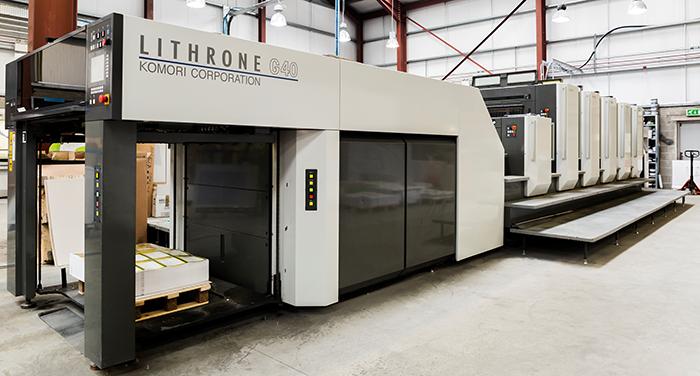A Comprehensive Guide to Understanding Litho Printing Strategies
The world of litho printing, a technique originating from the late 18th century, is a fascinating mix of history, science, technology and art. Keep with us as we journey right into the fascinating world of litho printing.
The Historical Development of Litho Printing
The historic trajectory of litho printing, a pivotal development in the realm of communication, is an exciting tale of human ingenuity. Birthed in the late 18th century by Alois Senefelder, this method was originally an economical technique of publishing staged jobs. Lithography, derived from the Greek words for 'stone' and 'to create', used a smooth rock surface to transfer pictures onto paper. The procedure progressed with the arrival of the rotating press, which significantly boosted productivity (litho printing). In the 20th century, the innovation of offset lithography revolutionized the industry, allowing for automation of top notch prints. Each stage of litho printing's development showcases mankind's ruthless quest of performance and quality in aesthetic interaction.
Translating the Scientific Research Behind Litho Printing Inks
Relocating ahead in the exploration of litho printing techniques, the emphasis now moves to the scientific research behind litho printing inks. The make-up of these inks, their drying process, and color mixing methods form the foundation of this complex art form. Understanding these elements is crucial to understanding the craft and accomplishing the wanted print results.
Composition of Litho Inks
In lithographic printing, the basic role of litho inks can not be overstated. The make-up of litho inks differs depending upon its objective, however generally, they contain two primary components - pigments and automobiles. Pigments, the color-providing components, are finely ground bits put on hold in the car, a fluid that lugs the pigment onto the printing surface. The automobile is a complex blend of resins, oils, and solvents, which affect the ink's drying out time, adhesion, and gloss. In addition, different additives exist to improve certain residential or commercial properties like circulation, drying, and resistance to environmental results. Each element plays an essential part in the last print's high quality, making the exact solution of litho inks an elaborate scientific research.
Ink Drying Process
From the structure of litho inks, focus transforms to the fascinating procedure of ink drying out. Two main approaches are used in litho printing: oxidative drying and absorption. Absorption, on the various other hand, involves the ink permeating into the paper fibers, which is a quicker process yet can lead to much less dynamic shades.
Color Combining Techniques
While the drying procedure plays a vital duty in litho printing, the scientific research of color mixing techniques holds equivalent significance. The scientific research behind litho printing inks also takes into account the openness of the ink, which influences how colors overlay and mix.
The Art and Layout Elements in Litho Printing
Litho printing breathes life right into art and layout through its special components. The process includes producing a photo on a lithographic limestone plate or metal plate with a smooth surface. The picture wikipedia reference is after that printed onto a medium, generally paper, by transferring the ink from the plate. What sets litho publishing apart is its capacity to reproduce intricate designs with high fidelity, making the outcome nearly the same to the initial art work. This is achieved through the use of different line methods such as cross-hatching, hatching, and stippling, which enable a series of tonal impacts. Litho printing fits a range of colors, allowing musicians to develop dynamic and dynamic prints. This combination of accuracy and convenience makes litho printing a recommended selection for many artists and designers.
Modern Applications of Litho Printing Strategies
Litho printing methods have discovered comprehensive usage in the contemporary commercial field. Its influence and importance remain to grow with the development of new technologies and innovations in the field. This section will discover these contemporary applications and the transformative function they play in the printing sector.
Industrial Litho Printing Makes Use Of
In today's digital age, one could wonder regarding the relevance of standard printing approaches. Yet, litho printing stays an essential component of the business industry. High-volume printing jobs, such as the production of publications, newspapers, and packaging, count on litho printing for its capacity to supply superior image quality and cost efficiency. The process, which includes transferring an inked photo from a plate onto a rubber blanket Get More Info and afterwards to the printing surface area, uses unmatched consistency. This makes it excellent for tasks needing a large print run. Litho printing additionally provides a broad color range, above that of electronic printing. This makes it the best selection for projects that demand vivid, premium shade recreation.
Innovations in Litho Printing
Pressing the limits of traditional strategies, contemporary advancements have fueled a host of technologies in litho printing. One prominent growth is digital litho printing, which integrates the virtues of electronic innovation with litho's top quality result. These technologies underscore the enduring significance of litho printing in the modern-day world.
Checking out the Refine of Litho Printing: Detailed

Challenges and Solutions in Contemporary Litho Printing

Regardless of the accuracy and practice that litho printing happily promotes, it is not without its collection of modern difficulties. Digital litho printing enables for economical brief runs and simple modification, resolving the concern of variable information. Therefore, while there are difficulties, the litho printing market is proactively adapting to satisfy them head-on, ensuring its significance in the future.
Final thought
Finally, litho printing, with its abundant background and clinical ins and outs, holds a considerable area in the print sector. As the overview exposes, it's a synthesis of art and modern technology, with contemporary improvements ensuring its relevance. The sector deals with challenges that need ingenious solutions, with a focus on automation and sustainability. The future of litho printing depends upon its capability this to adapt to these transforming demands, verifying its long-lasting worth in a progressing market.
